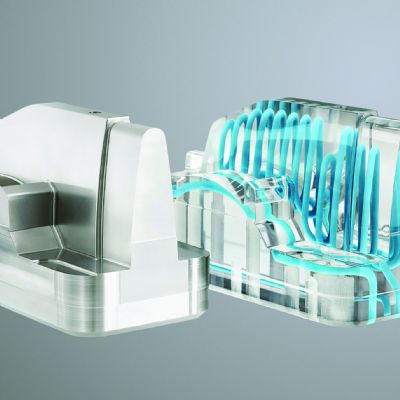AM Key to Agility and Supply-Chain Growth, New HP Report Reveals
October 16, 2020Comments
Regardless of sector or location, companies are looking to 3D printing to strengthen their supply chains, become more agile, and create more innovative product development and manufacturing strategies. This key finding from a newly released HP Inc. industry report is underscored by a rising investment in 3D printing, support for 3D printing as a viable alternative to traditional manufacturing, and a greater desire for closer ecosystem collaboration to drive adoption.
Manufacturing decision makers, as revealed in the report, also see opportunities for accelerated innovation, recognizing that additive manufacturing (AM) is uniquely suited for the mass personalization of new products, and by also reducing waste and promoting a more sustainable economy.
“The global manufacturing sector is clearly signaling a desire for greater supply-chain resiliency, more manufacturing flexibility, increased speed of innovation and stronger environmental sustainability,” says Ramon Pastor, general manager of HP 3D Printing & Digital Manufacturing, commenting on report findings. “And, they see industrial 3D printing as a way to not only lower costs and go to market faster, but as a unique competitive advantage that accelerates innovation for customers.”
Other report findings:
- Over the next 12 mo., 71 percent of respondents plan on investing in digital manufacturing technologies, and more than 85 percent indicated that their company plans to increase their AM investment.
- 75 percent report that AM helps their company be more agile, is a viable alternative to traditional manufacturing and is a backup to traditional manufacturing.
- More than 90 percent report investigating new production/supply chain models, with 59 percent evaluating hybrid models and 52 percent exploring localized production.
- The most cited benefit of using AM is the increased ability to innovate.
- The top new areas of innovation being investigated by companies include mass customization for direct-to-consumer products, production on demand and digital warehousing/virtual inventory.
- Medical, industrial and automotive were called out as industries most ripe for innovation in 3D printing over the next five years.
- The top barrier to entry into AM is finding a qualified workforce.
- To address this skills gap, 64 percent want to offer more professional training services, and 53 percent want companies, governments, institutions and citizens to work together to make investments in educational and job-skilling programs.
- The top cited ways that AM can reduce waste and promote a circular economy are reducing the amount of materials used, better matching of supply and demand, shortening and simplifying traditional supply chains, and improving service options that can prolong the life of products.
- 90 percent see the recyclability of AM powders and parts is important.
See also: HP Inc.
Technologies: Additive Manufacturing







